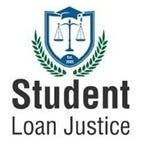Department of Education: Over half of federal student loan borrowers were not paying before Pandemic.
In late 2019, nearly 60% of all borrowers were not making payments on their student loans. Discounting for students in school or in the grace period still reveals that more than half of all borrowers were not paying.
November 11th, 2021
Updated June 4th, 2022*
Recent data from the Department of Education reveals several disturbing and unreported facts about both the Federal Direct Student Loan Program, and also the Federal Family Education Loan Program (FFELP). These two programs account for the vast majority of all federal student loans in the country.
First, the data show that just before the Covid-19 pandemic had arrived in the U.S., over half of all federal student loan borrowers were not making payments on their loans (ie. they were either in default, forbearance, deferment, or were otherwise not making payments).
What is more disturbing: of the 8.54 million people who were enrolled in Income Driven Repayment plans (IDR), half were making $0 payments according to Ben Miller (Center for American Progress). If they are included as “non-payers” in these data, the percentage of non-payers jumps to 58.9%. Removing the borrowers who were still in school, or in their grace period (8.8 million people) still leaves a non-payment rate of more than half (50.5)%.
Significantly, the data showed a large increase in defaults and default rates for both types of loans since 2013. For Direct Loans, the number of defaults nearly tripled (from 2.1 million to 5.7 million) and the default rate nearly doubled (from 7.5% to 14.5%) between July 2013 and January 2020.
For the FFELP program (which was ended in 2010), defaults have grown dramatically worse. For federally held FFELP loans (which can be cancelled by executive order), the percentage of borrowers in default climbed from 33% to nearly half of all borrowers in a shorter time period (2016 to the present). For FFELP loans generally, the percentage of loans in default grew from 19.2% in 2013 to 32% in Q3 2021.
Note: The Department of Education acknowledged in 2015 that 1 in 5 defaulted borrowers are compelled to pay to bring their loans out of default through loan rehabilitation, a very expensive, and extremely unwise process where 80% of rehabilitated loans default a second time. This implies true default rates of 25% higher than what is shown here.
These defaults will increase quickly going forward. The Brookings Institute predicted a default rate of 40% for all borrowers who left school in 2004, but this class borrowed less than a third of what is borrowed today. In December, 2019, Education Secretary Betsy DeVos remarked that 75% of all federal borrowers were “not making headway” on their loans (ie they were either unable to pay, or were paying, but their loan balances were increasing). Taken together, these data suggest that something like 75% of all borrowers were ultimately going to default on their loans even before the pandemic. The subprime home mortgage default rate during the Financial Crisis of 2008, by contrast, was only 20%.
Because federal student loans have been uniquely stripped of bankruptcy protections and statutes of limitations, the real harm these loans have caused tens of millions of people has been especially severe, and the harm that the federal lending system is now poised to inflict upon the citizens is immeasurable. This is not acceptable.
The President and Congress should act swiftly to resolve this problem. Passing the bankruptcy bill S.2598 is the least that Congress can do in the near term. This legislation will return standard, constitutionally enshrined bankruptcy protections to federal student loan borrowers who have been out of college for ten years or more. It has both republican and democratic sponsorship and could be passed quickly.
President Biden should immediately order the Department of Education and its contractors to stop opposing student loan borrowers in bankruptcy court. However, it would probably be better at this time to simply cancel the loans entirely by executive order (which could be done with no funds needed from the Treasury, and nothing added to the national debt), and use this pandemic as an opportunity to replace the lending system with a more rational- and less expensive-funding model for higher education in this country.
*The Department of Education report for number of borrowers enrolled in IDR’s was listed in the “portfolio by school-type” report as 14.9 million borrowers. However, other reports (IDR portfolio by debt size, location, age) reported the number of IDR borrowers as lower than this (around 8.5 million borrowers). In view of this disparity, it was decided to use the lower reported figures. This did not change the claims of this analysis, although the values were adjusted.
